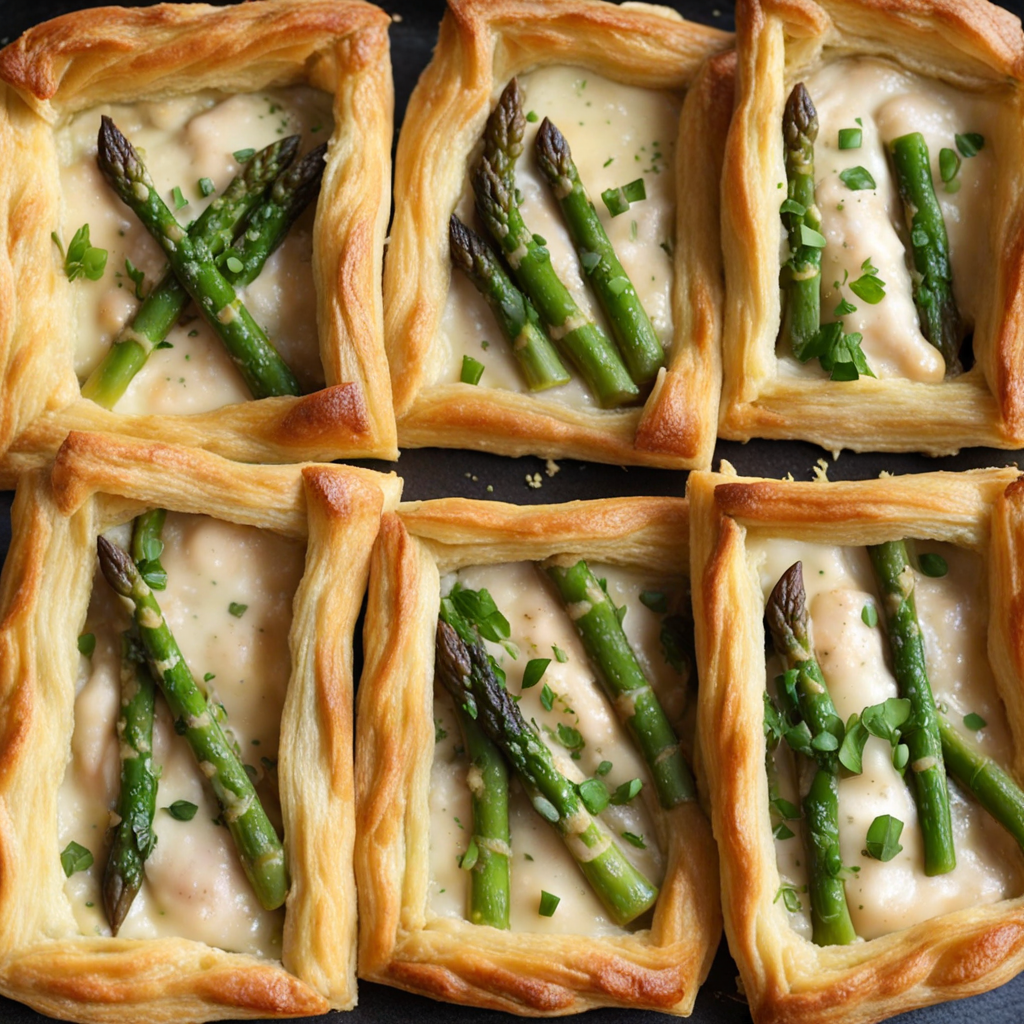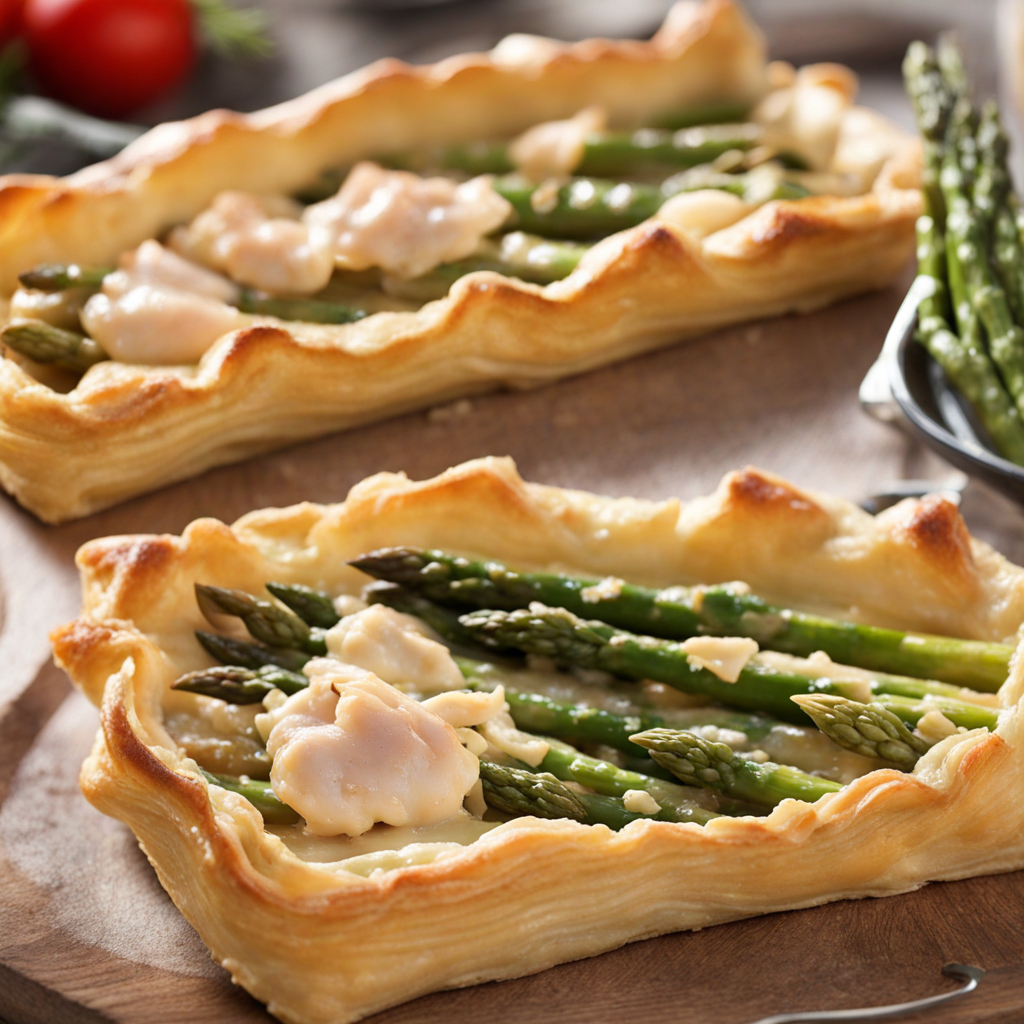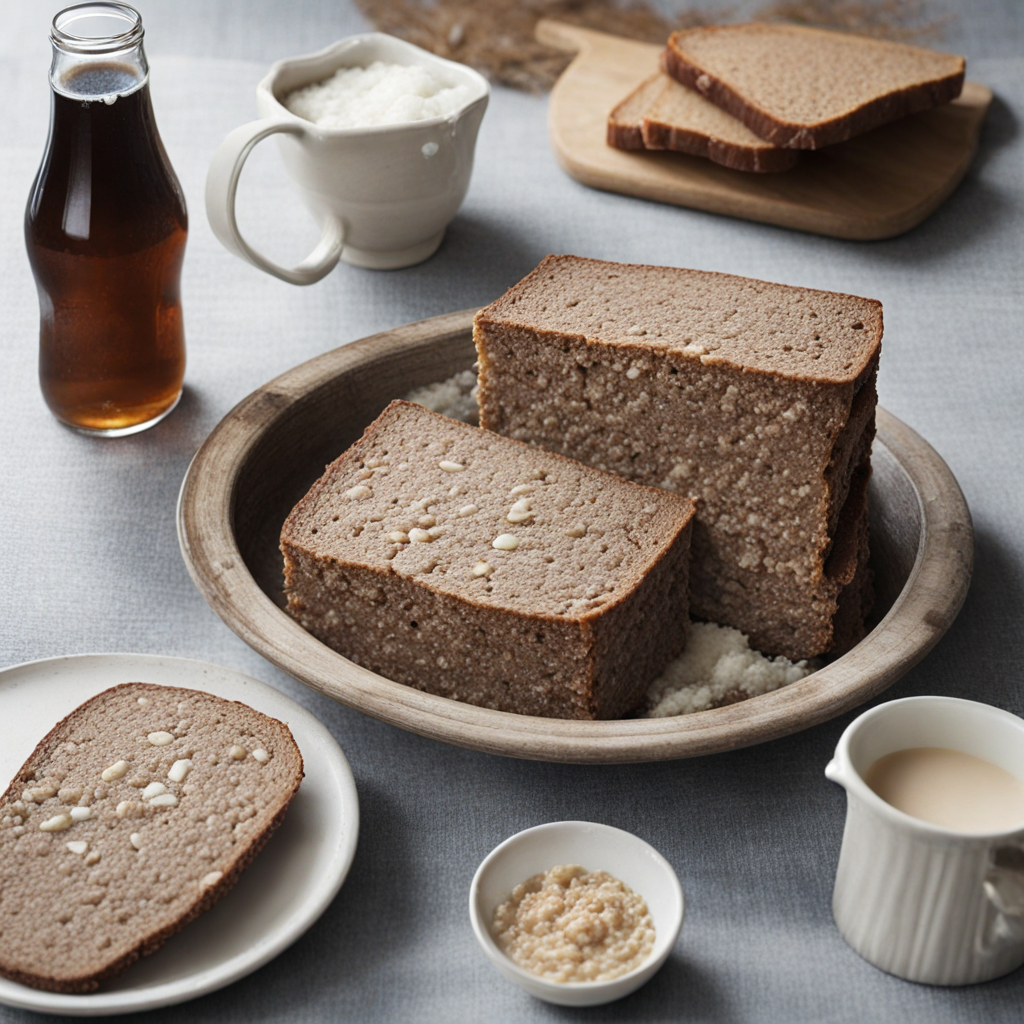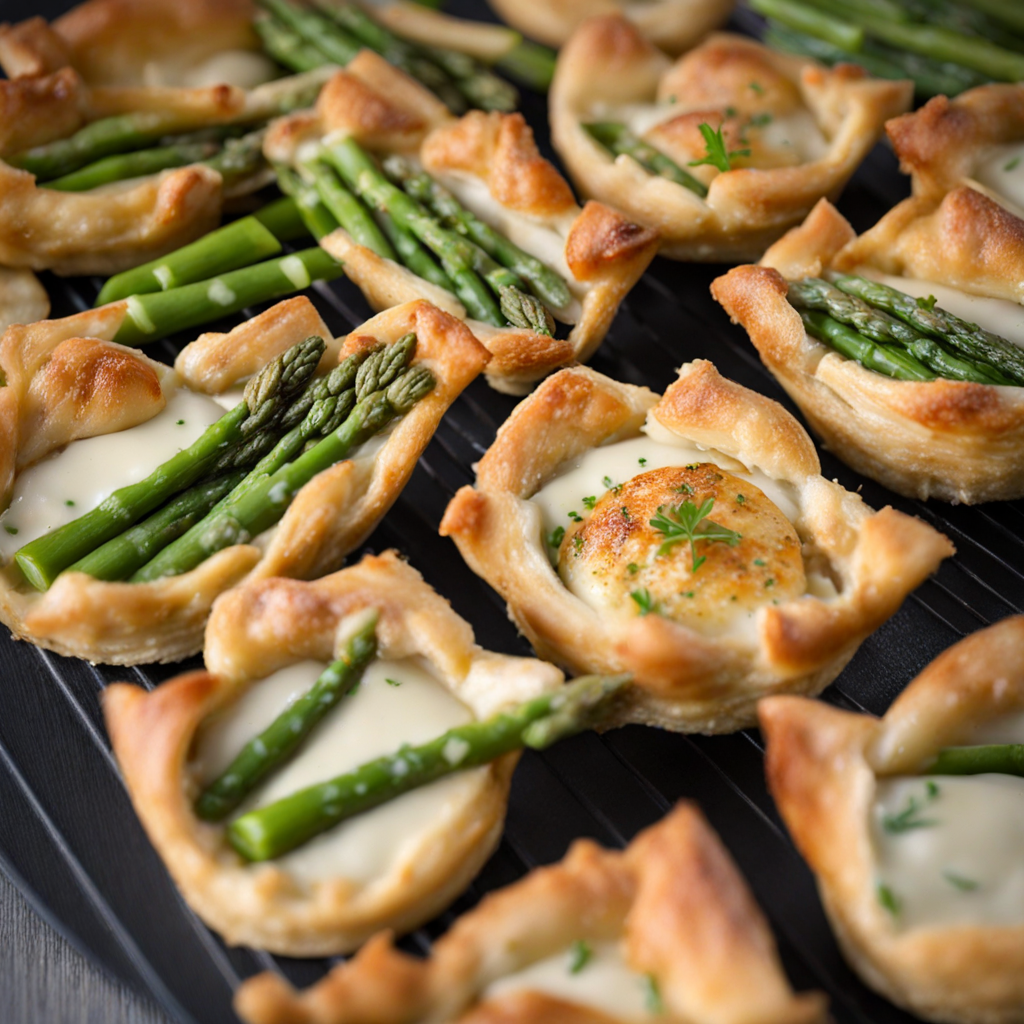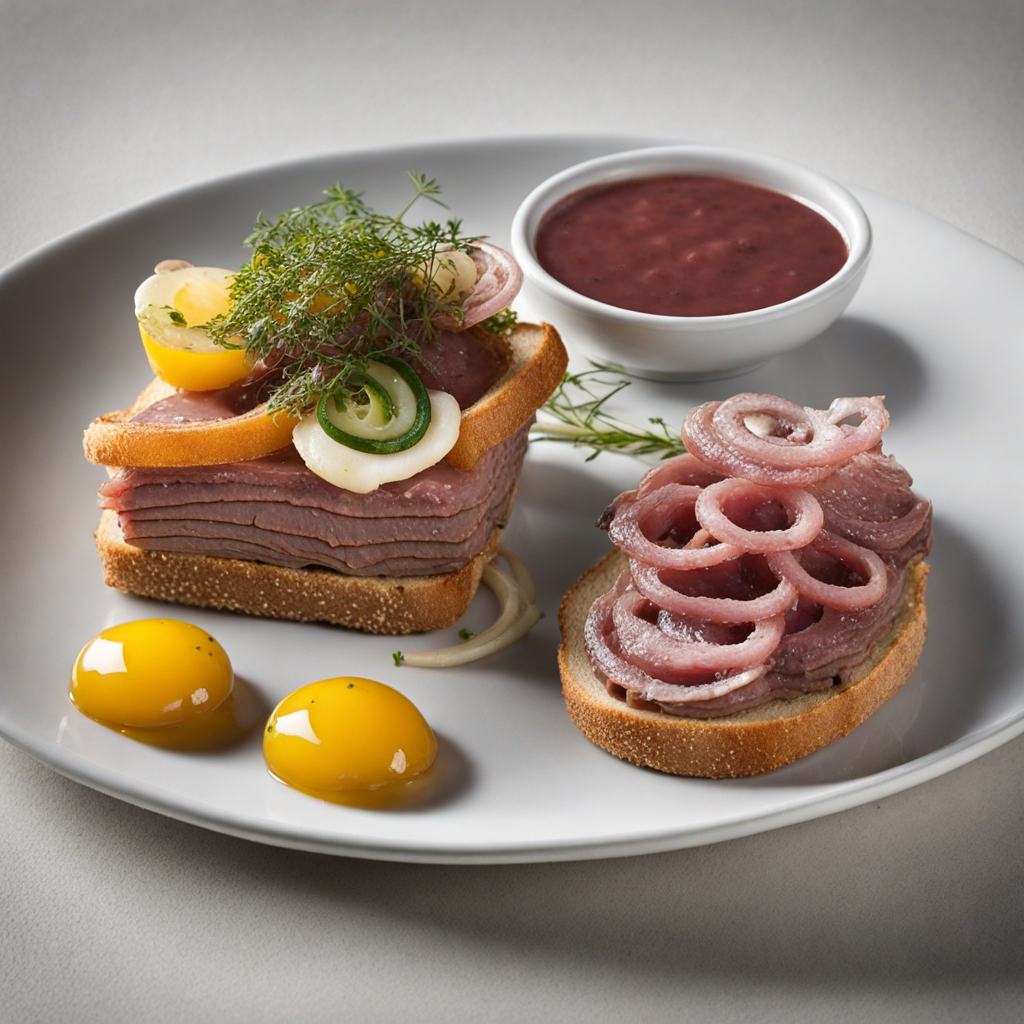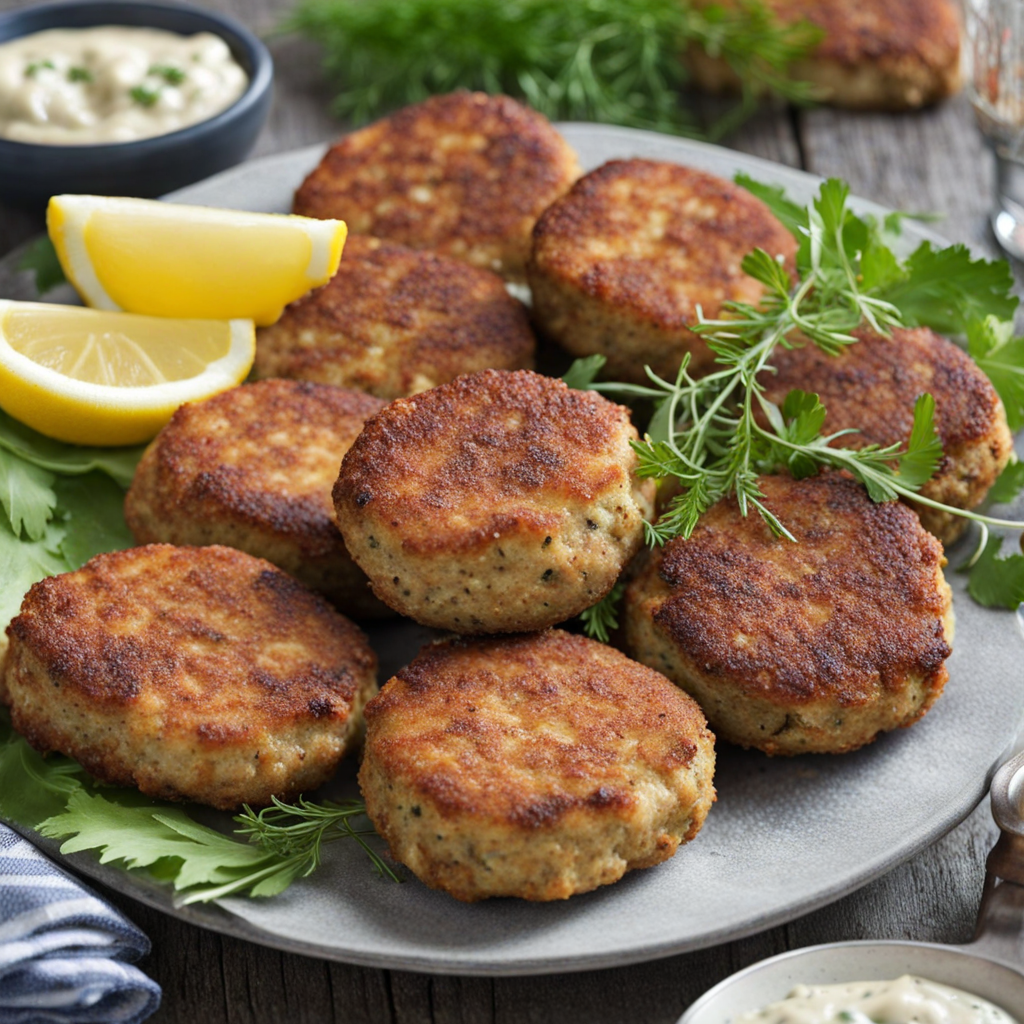Tarteletter
Tarteletter are delightful Danish pastries that offer a unique blend of flavors and textures, making them a cherished comfort food in Denmark. These small, open-faced tart shells are typically made from a buttery, flaky pastry that is both crisp and tender, providing the perfect vessel for a variety of delicious fillings. The pastry is baked until golden, achieving a delightful crunch that contrasts beautifully with the softer ingredients it holds. Traditionally, they are served as a savory dish, showcasing the Danes' love for fresh, seasonal produce and hearty flavors. Common fillings for tarteletter include a creamy chicken salad, often combined with mushrooms and peas, or a rich, savory mixture of seafood, such as shrimp and crab. The fillings are typically bound with a velvety béchamel or a creamy sauce, enhancing the overall taste experience. Each bite delivers a burst of flavor, where the richness of the filling complements the lightness of the pastry, creating a harmonious balance that excites the palate. Tarteletter can also be adapted to feature vegetarian options, with fillings like sautéed vegetables or mushrooms, making them versatile for different dietary preferences. These pastries are often enjoyed as a festive dish, making them a popular choice for gatherings and celebrations in Denmark. Served warm or at room temperature, tarteletter can be garnished with fresh herbs or a sprinkle of paprika for an added touch of color and flavor. Whether enjoyed at a family gathering, a holiday feast, or simply as a comforting homemade treat, tarteletter embody the essence of Danish cuisine, inviting food lovers to discover a delightful and satisfying experience that is both comforting and celebratory.
How It Became This Dish
Tarteletter: A Culinary Journey Through Danish Tradition #### Origins Tarteletter, a cherished dish from Denmark, embodies the heart of Danish home cooking. The name itself derives from the French word "tarte," which refers to a pastry shell, and "letter," which is the Danish term for small or little. These delightful pastry shells are typically made from a simple dough of flour, butter, and water, rolled thin and baked until crisp. The origins of tarteletter can be traced back to the early 19th century, when European culinary traditions were heavily influenced by the French, known for their pastry-making skills. The adaptation of these French techniques into Danish cuisine reflects a broader trend during this period, where Denmark was opening up to new culinary ideas and practices, influenced by the bourgeois class that was rising in status. Tarteletter quickly became a canvas for various fillings, highlighting the versatility of the pastry and the creativity of Danish cooks. #### Cultural Significance Tarteletter hold a special place in Danish culture, often regarded as comfort food that brings back memories of family gatherings and festive occasions. In Denmark, food is deeply intertwined with social practices, and tarteletter have become synonymous with celebrations, particularly during holidays and special events. The dish is often filled with creamy mixtures of chicken, asparagus, or mushrooms, and topped with a sprinkle of parsley, evoking nostalgia for home-cooked meals shared with loved ones. In Danish households, tarteletter are commonly served during Easter, birthdays, and various celebrations, reflecting their status as a traditional dish suitable for both everyday meals and festive occasions. The preparation of tarteletter can also be a communal activity, where families come together to create the delicate pastry shells and choose fillings, fostering bonds and creating lasting memories. #### Development Over Time As Denmark entered the 20th century, the culinary landscape began to evolve, influenced by globalization and the changing dynamics of society. The industrial revolution brought about advancements in food production and preservation, allowing for a wider variety of ingredients to be available to the average household. This accessibility influenced the fillings used in tarteletter. Traditional recipes, which often showcased seasonal and local ingredients, began to evolve as more exotic ingredients entered the Danish market. Post-World War II Denmark saw a surge in the popularity of convenience foods, and while this affected many traditional recipes, tarteletter remained resilient. The simplicity of the dish lent itself well to both homemade and pre-packaged versions. The ready-made pastry shells found their way into supermarkets, making it easier for busy families to enjoy this classic without the extensive preparation that was once customary. In contemporary Denmark, tarteletter have adapted yet again, reflecting modern culinary trends. Chefs and home cooks alike experiment with innovative fillings, incorporating ingredients like smoked salmon, roasted vegetables, and even vegan alternatives. This evolution showcases a growing awareness of dietary preferences and health consciousness, while still honoring the classic roots of the dish. #### Tarteletter in Modern Cuisine Today, tarteletter are not only a staple in Danish homes; they have also gained recognition in the broader culinary world. Danish restaurants often feature creative interpretations of the dish, showcasing local and seasonal ingredients while paying homage to traditional flavors. For instance, contemporary dining establishments might serve tarteletter with a twist, using spelt flour for the pastry or incorporating flavors inspired by global cuisines. Furthermore, Denmark's acclaimed New Nordic culinary movement, which emphasizes sustainability and local sourcing, has also embraced tarteletter. Chefs may substitute traditional fillings with local seafood, foraged herbs, or root vegetables, creating a sophisticated yet rustic presentation that appeals to both locals and tourists alike. #### Tarteletter: A Symbol of Danish Identity In a broader context, tarteletter have come to symbolize Danish identity. They represent the simplicity and warmth of Danish home cooking, a reflection of the country’s values of hygge—creating a cozy, inviting atmosphere. The act of preparing and sharing tarteletter transcends mere nourishment; it encapsulates the essence of togetherness, comfort, and joy that is central to Danish life. As Denmark continues to evolve, so too does the significance of tarteletter. They serve as a reminder of the past while simultaneously embracing the future. The dish is often featured in culinary festivals and competitions, where chefs showcase their creativity and technical skills, ensuring the continued relevance of this traditional pastry in modern cuisine. #### Conclusion Tarteletter, with their rich history and cultural significance, are more than just a delightful dish; they are a reflection of Danish heritage, a testament to the adaptability of traditional recipes, and a symbol of community and togetherness. From their humble beginnings influenced by French pastry techniques to their modern interpretations in the New Nordic culinary scene, tarteletter encapsulate the spirit of Danish cooking—simple yet profound, rustic yet elegant. As they continue to evolve, one thing remains clear: tarteletter will always hold a special place in the hearts and homes of the Danish people, serving as a delicious reminder of their culinary roots and the importance of sharing meals with loved ones. Whether enjoyed at a festive gathering or a quiet family dinner, tarteletter are a celebration of flavor, tradition, and the bonds that bring us together.
You may like
Discover local flavors from Denmark


